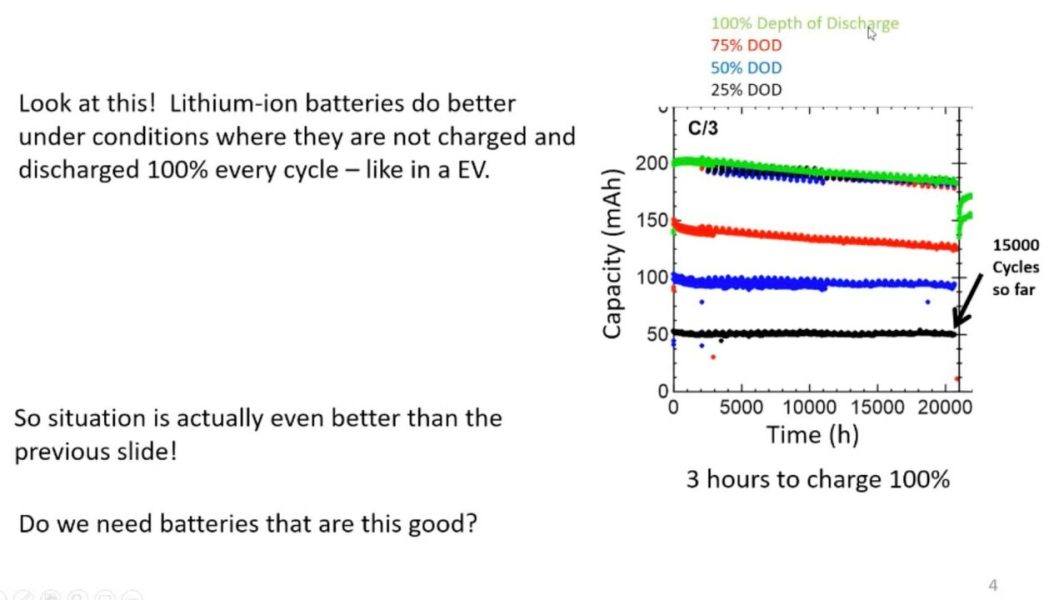
Will these be the new Tesla batteries? 15 3 working cycles, 175+ million km, 250-XNUMX years (!) Of operation
Jeff Dunn, a Tesla scientist and one of the world's greatest experts when it comes to lithium-ion cells, praised the test results for the new cell type. They are capable of withstanding 10-15 thousand operating cycles without significant power losses. That means 3,5 million kilometers, which even from 20 kilometers a year would mean 175 years of driving.
With the statistical exploitation of the Pole for over 250 years of driving!
Dan's new cells - let them work in a 50-> 25% cycle and they will last forever
The results presented by Dahn remind us once again why the development of lithium-ion batteries seems so slow. Good some of the cells he designed were in testing machines for three years. and reached the area of 10 350 cycles. The effect? If the battery built on their basis offered a range of XNUMX kilometers, the car would have traveled 3,5 million kilometers:

All graphs show the decrease in cell capacity versus duty cycles. The ones on the left are loaded from 0 to 80 percent, those in the middle are from 0 to 90 percent, those on the right are from 0 to 100 percent.
The graphs symbolize:
- C / 20 - charging with a minimum power of 1/20 of the battery capacity. In a normal car, it will be about 2-5 kW,
- C / 2 - charging 1/2 capacity, i.e. for a battery 74 (80) kWh - 40 kW,
- 1C, 2C, 3C - charging with 1x, 2x and 3x battery capacity. If we take the Tesla Model 3 battery as a basis, then it will be 80, 160 and 240 kW.
It is easy to see that the largest drop in charge occurs with a powerful battery over the entire available range (dotted, jagged graph on the right). No car manufacturer does this today.
When the Electrek portal (source) was caught, Dan submitted research results on other links... After 20 hours of operation (833 days = 27,78 months = 2,3 years) they are in cycle number 15. And although at 100% discharge you can see a slight drop in their capacity (green line) plus a strange fluctuation at the end, with a cycle of 50-> 25-> 50 percent, there is practically no degradation:

Let us emphasize: we are dealing with 15 350 working cycles. If the cells were in the battery of an electric vehicle with a range of XNUMX kilometers, the vehicle will have a mileage of 1,3 million (25% cycle) or 2,6 million (50% cycle) kilometers! Meanwhile, lithium-ion cells used in cell phones are considered good if they can withstand 500-700 cycles ...
> The lab, powered by Tesla, boasts elements that will withstand millions of kilometers.
The entire presentation can be viewed in the video below. It's unclear if Jeff Dunn (right) is talking about the links he's working on for Tesla. Perhaps it will only be the next generation, because a device offering 10 or more duty cycles ... is still being tested:
Tesla is currently announcing 4680 cells with higher nickel content and lower cobalt content. In the future, they will use only lithium, nickel and manganese, and cobalt will be completely excluded from them:
> Will the 4680 cells in Tesla's new batteries be cooled from the top and bottom? Only from below?
This may interest you: